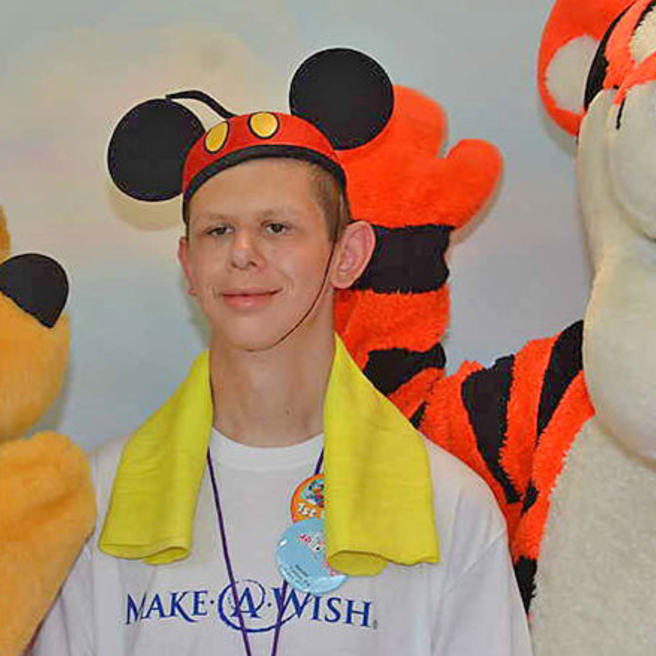What is aortic stenosis?
When the heart beats, the left ventricle contracts, pushing blood into the aorta, the main artery that takes oxygenated blood to the body. The aortic valve is located between the left ventricle and the aorta. It functions as a door and prevents blood from leaking back into the heart between beats.
A normal aortic valve is made up of three thin leaflets. In aortic stenosis, these leaflets are fused or too thick. As a result, the aortic valve becomes stiff and is too narrow. This leads to obstruction of blood flowing out of the heart. To compensate, the heart has to work harder against this resistance to pump enough blood to the body. Aortic stenosis can be trivial, mild, moderate, severe or critical.
Sometimes the stenosis (narrowing) is below the valve in the left ventricle, caused by a fibrous membrane or a muscular ridge. This is called subaortic stenosis. The narrowing can occur above the valve, in the aorta itself; this is called supravalvular aortic stenosis.
Signs and symptoms of aortic stenosis
In young infants, severe or critical aortic stenosis can cause decreased blood flow, which causes symptoms such as a lack of energy (lethargy), poor feeding and respiratory distress.
Milder forms of aortic stenosis usually won’t cause symptoms in infants or small children. As the child gets older, aortic stenosis symptoms may appear, including fatigue, exercise intolerance, a heart murmur (an abnormal heart sound when a doctor listens with a stethoscope), or, rarely, chest pain, fainting or arrhythmias (abnormal heart rhythm).
Testing and diagnosis for aortic stenosis
In rare cases, newborns have critical aortic stenosis. This requires immediate medical attention. Sometimes these severe cases are diagnosed before birth, through the Fetal Heart Program at Children’s Hospital of Philadelphia (CHOP).
In most cases, we diagnose aortic stenosis after a primary care doctor detects a heart murmur and refers the child to us. Diagnosis may require some or all of these tests:
- Pulse oximetry, which monitors the oxygen content of the blood with a small finger attachment
- Chest X-ray, which can help identify problems with the heart and lungs
- Echocardiogram (also called "echo" or cardiac ultrasound), which uses ultrasound waves to create an image of the heart; it can show the size, shape and movement of the heart's valves and chambers, as well as the flow of blood through the heart
- Electrocardiogram (ECG), a record of the electrical activity or rhythm of the heart
- Cardiac MRI, a three-dimensional image showing the heart's abnormalities
- Cardiac catheterization, in which a thin tube (called a catheter) is inserted into the heart through a vein or artery in the leg or belly button
Aortic stenosis can run in families, so be sure to tell your cardiologist if there is a history of a heart murmur in other close family members.
Aortic stenosis treatment
Treatment for aortic stenosis depends on a child's unique heart anatomy. Trivial and mild aortic stenosis typically do not require treatment. Moderate, severe and critical aortic stenosis, however, do require treatment which may include one or more of the following options:
Cardiac catheterization
In most cases, aortic stenosis can be treated with a balloon valvuloplasty, which requires cardiac catheterization. An interventional cardiologist will insert a thin tube (catheter) into an artery in the leg, then guide the tube through the body, across the aortic valve and into your child’s heart.
The catheter will have a balloon on the end of it. The balloon will be briefly inflated to open the narrow valve, then deflated and withdrawn. Sometimes, two catheters and balloons are used. In newborns, the blood vessels in the umbilical cord are sometimes used as the site where the catheters are inserted and advanced toward the heart.
Older children will typically spend one night in the hospital after this procedure, in CHOP’s dedicated post-catheterization recovery unit, before returning home. They will also need to rest for the next few days, but then can resume normal activity. Newborns with critical conditions or children who are already inpatients at CHOP may stay in the Hospital slightly longer, either in the Evelyn and Daniel M. Tabas Cardiac Intensive Care Unit (CICU), where they will receive around-the-clock care from a team of dedicated cardiac critical care medicine specialists, or in the Cardiac Care Unit (CCU).
Valvuloplasty
Repairing or replacing a faulty or blocked heart valve may be necessary in severe cases. Depending on your child’s age, needs and valve anatomy, physicians may attempt to repair the valve or improve its function with a procedure called a valvuloplasty.
Artificial valves
Another option for aortic stenosis treatment includes a valve replacement. This can be done with either a tissue or mechanical valve. If this is the case, your child may need to stay on blood-thinning medicines for the rest of their life.
Ross Procedure
Surgeons may decide a Ross Procedure is the best option to treat aortic stenosis. In this operation, the aortic valve is replaced with the patient's native pulmonary valve. The pulmonary valve is then replaced with a valve from a donor. This procedure allows the patient's new aortic valve to grow with the child. This does not require blood thinner.
Subaortic and supravalvular stenosis treatment
Subaortic and supravalvular stenosis do not improve with balloon dilation and will require heart surgery if the amount of obstruction is moderate or severe, or, in the case of subaortic stenosis, the aortic valve begins to leak significantly.
Outlook for aortic stenosis
Because of enormous strides in medicine and technology in recent years, most children with heart conditions today go on to lead healthy, productive lives as adults. All patients with aortic valve disease will need some form of lifelong follow-up care with a cardiologist.
Follow-up care
Early years (0-5 years)
As a group, children with complex congenital heart defects who have had open heart surgery as infants are at a higher risk for neurodevelopmental issues when compared to children without congenital heart defects. The Cardiac Center at CHOP created the Cardiac Kids Developmental Follow-up Program to provide evaluation, screening and clinical care for children with complex congenital heart disease who are at risk for neurodevelopmental problems.
Through 18 years
Children with aortic valve stenosis require regular checkups with a pediatric cardiologist. Some children must remain on medicine and limit physical activity.
As a child with aortic stenosis grows, blood may begin to leak through the abnormal valve. This is called aortic regurgitation or aortic insufficiency. In other children, the stenosis can reoccur. When this happens, balloon valvuloplasty can be repeated, as long as there isn't significant aortic regurgitation. In severe cases, additional surgery may be necessary.
At Children’s Hospital of Philadelphia (CHOP), our pediatric cardiologists follow patients until they are young adults and coordinate care with primary care physicians.
Into adulthood
Aortic stenosis can continue to cause health problems in adults. It is very important that adults with aortic stenosis are monitored by a cardiologist regularly for the rest for their lives. CHOP’s Cardiac Center can help with the transition to an adult cardiologist.
The Philadelphia Adult Congenital Heart Center, a joint program of CHOP and Penn Medicine, meets the unique needs of adults who were born with heart defects.

Why Choose Us
Our specialists are leading the way in the diagnosis, treatment and research of congenital and acquired heart conditions.
Resources to help
Cardiac Center Resources
We know that caring for a child with a heart condition can be stressful. To help you find answers to your questions – either before or after visiting the Cardiac Center – we’ve created this list of educational health resources.
Reviewed by Stephanie Fuller, MD
Reviewed on 10/16/2024

